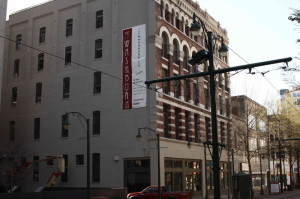Services
We offer services in all areas of Building, Energy and Accessibility Codes
Existing Building Code:
When existing buildings are renovated or the use is changed, the authority having jurisdiction can require the building to be brought up to current code requirements costing the owner thousands of dollars. Typically sprinklers, fire alarms, rated walls and fireproofing are required. We are experts at applying the existing building code's evaluation process and depending on the use and building, we can assure that the minimum requirements of the jurisdiction have been met.
Accessibility Codes:
Whether it is the Americans with Disabilities Act - Title II and III, North Carolina Accessibility, California Title 24, ANSI, or Chapter 11 of the IBC, we can provide project specific check lists, plan review services and site inspections as the job progresses, with ICC certified personnel who have a proven track record in accessibility plans examination and inspection.
Pre-Acquistion Due Dilligence
CSG assist propective building owners and tenants during the purchase process or lease negociations by inspecting the buildng for code compliance, and the appropriatenees of the buildngs facilities and zoning for the intended use. During the process the local authorities are contacted to insure compliance with regulatons can be obtained and the buildng can be occupied resonably and economically.<< New text box >>
Hazardous Material Storage
CSG works with warehousing, manufacturing,and the service industry to develope manufacturing and storage compliance methods and alternatives in existing and proposed newq facilities.
Energy Code:
As "GREEN" becomes more and more important many jurisdictions are requiring compliance with the International Energy Conservation Code, ASHRAE 90.1 or have written their own energy code. We have assisted design professionals with projects in California, Washington State, Tennessee, Michigan, Wisconsin, Alabama and many other States by checking for energy compliance during the design and specification process, preventing the re-design or modification after the project is out to bid. Less change orders equals greater savings for the owner, less headaches for the designer and contractors, and a satisfied customer with an efficient building as an end product.





